Used Hydrofoils in Kiteboarding: Benefits and Insights
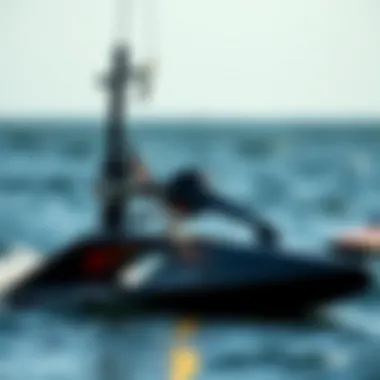
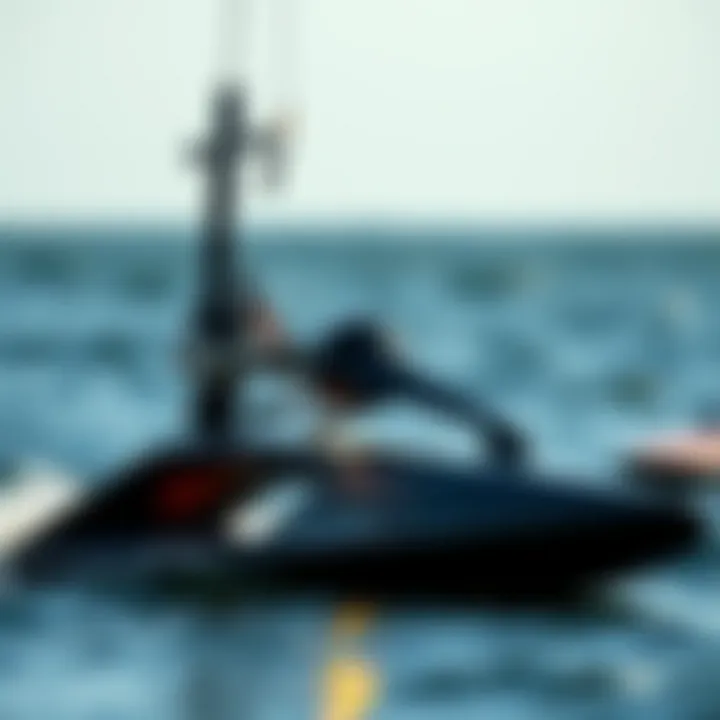
Intro
In the vibrant world of kiteboarding, the adoption of hydrofoils has significantly shifted the performance and fun aspects for riders. As the popularity of these devices grows, the market for used hydrofoils is expanding too. For many, acquiring second-hand gear has become a smart and sustainable option. There are numerous benefits to consider, including cost savings and access to a vast variety of styles and technologies that might be harder to find as new products continue to flood the market.
This article aims to illuminate several essential areas surrounding the use of hydrofoils so that both newcomers and seasoned enthusiasts can navigate this niche effectively. From understanding the latest gear available to practical considerations like maintenance and safety, all aspects serve to enrich the riding experience.
Equipment Insights
Latest Gear Reviews
Used hydrofoils often present a treasure trove of options, showcasing numerous brands and designs that can enhance one's performance on the water. Some notable brands in the second-hand market include Naish, Liquid Force, and Slingshot. Each brand has characteristics that cater to different riding styles and preferences. For instance, Naish foils might be recognized for their stability, whereas Slingshot can be noted for their speed capabilities.
When diving into the second-hand market, it’s helpful to identify what features are critical for your riding style. Here’s what to look out for:
- Wing Shape: Determines lift and handling.
- Material Condition: Always examine for signs of wear, any dents or scrapes.
- Mast height: Affects your performance in both flat waters and waves.
Essential Gear Maintenance
Buying used gear can lead to surprising treasures, but proper maintenance is key to ensuring longevity and safety. Regular checks and careful upkeep can extend the life of hydrofoils while enhancing their performance. Here are some maintenance tips to keep in mind:
- Inspect Regularly: Before each session, check for crack or fractures in the foils, mast, and base.
- Clean After Use: Saltwater can be corrosive; rinsing off with fresh water minimizes deterioration.
- Store Properly: Keep your hydrofoil in a cool, dry place, ideally horizontal, to avoid warping or any strain on the connections.
Understanding Hydrofoils
When diving into the world of kiteboarding, understanding hydrofoils is crucial. Hydrofoils are not just fancy gear; they fundamentally change how you experience riding on water. These devices help lift the board out of the water, significantly reducing drag and allowing riders to achieve higher speeds with less effort. This dynamic adds an exhilarating element to kiteboarding that is hard to replicate.
Definition and Functionality
Hydrofoils are essentially winged structures mounted on masts that extend below the water surface. When speed is attained, the hydrofoil generates lift, causing the board to rise above the water. This lift can be compared to how an airplane wing operates, slicing through air with minimal resistance. One key benefit is that by reducing the board's contact with water, it results in a much smoother ride, making it easier to cruise over choppy conditions.
Fundamentally, the functionality of hydrofoils lies in this lift generation. Unlike traditional kiteboarding where the board is constantly battling against the water surface, hydrofoils allow it to glide with a sensation akin to floating through the air. For those looking to maximize efficiency and speed, understanding these basic principles can be a �game changer.
Hydrofoil Design Variations
Diversity in hydrofoil designs has emerged, each tailored for various riding styles and conditions. Some common variations include:
- High Aspect Ratio Foils: These provide enhanced performance by boosting lift efficiency and reducing drag. Ideal for speed enthusiasts.
- Low Aspect Ratio Foils: They are more stable and forgiving, suited for beginners or those preferring a more leisurely ride.
- Fully Equipped Foils: These come with adjustable wings and other features that allow for fine-tuning to suit personal preferences.
Each variation caters to different skill levels and conditions, meaning a rider has the capability to truly customize their experience. Knowing these differences is essential for selecting a used hydrofoil that aligns with one’s riding aspirations.
The Science Behind Hydrofoiling
The science of hydrofoiling revolves around fluid dynamics. This field is densely packed with principles that dictate how water interacts with various shapes and structures. The shape of the hydrofoil plays a pivotal role in how efficiently it can generate lift. A well-designed hydrofoil harnesses Bernoulli's principle, where higher speeds create lower pressure above the wing, resulting in a lift that is further enhanced by the angle of attack.
Moreover, factors like speed, angle, and size of the foil all interact to affect performance. For instance, an increased speed enhances lift and creates a smoother ride; however, it requires a skilled rider to manage the accompanying forces. It’s a delicate balance between power and control, making understanding these principles essential for anyone using hydrofoils.
In summary, comprehending how hydrofoils operate not only enriches one’s appreciation of the sport but also serves as a foundational element for choosing suitable equipment and maximizing performance on the water.
The Appeal of Used Hydrofoils
Used hydrofoils are gaining attention in the kiteboarding scene for several compelling reasons. With kiteboarding being a sport that constantly evolves, the demand for innovative technology can sometimes feel overwhelming for both seasoned enthusiasts and newcomers. However, the option to explore second-hand hydrofoils provides a practical approach to diving into this cutting-edge world.
One of the most significant factors to consider is that buying a used hydrofoil can often lead to substantial cost savings. Instead of shelling out a small fortune for the latest model, enthusiasts can acquire a well-maintained, pre-owned hydrofoil at a fraction of the price. This opens a door for riders who may be budget-conscious but still want to experience the thrills of hydrofoiling without breaking the bank.
Furthermore, the used market allows kiteboarders to familiarize themselves with different hydrofoil styles and designs without the financial burden. Experimenting with various setups can enhance one’s understanding of individual preferences and riding styles, ultimately surfacing the best gear for personal needs. Not only can this save money, but it can also let riders dive headfirst into the sport without the pressure of making a perfect choice right out of the gate.
Cost-Effectiveness
The savvy buyer knows the importance of getting bang for their buck. When it comes to used hydrofoils, this principle rings true. The kiteboarding equipment market has made significant advancements, and as newer models hit the shelves, older ones find their way into the second-hand circuit. This leaves a landscape ripe for the picking for those looking to save some cash.
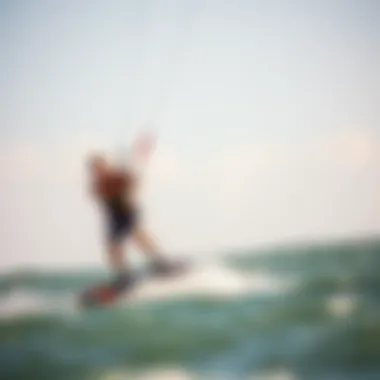
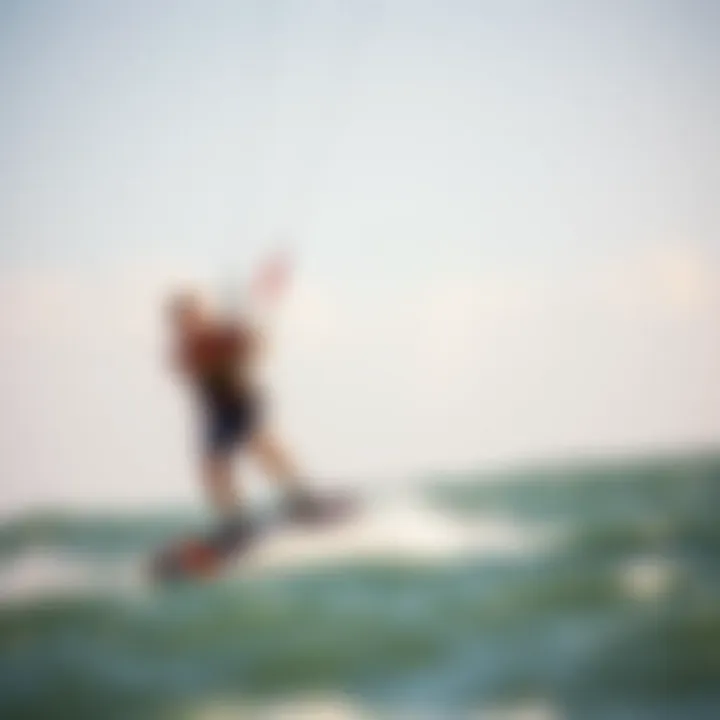
- Affordability: Used hydrofoils can be secured at bargain prices. Riders can typically find a suitable foil for their needs that fits within their financial constraints.
- Quality Options: Many products maintain their integrity and can offer similar performance to new models. With proper care and maintenance, a used hydrofoil can deliver an enjoyable kiting experience.
- Explore Different Options: Purchasing used hydrofoils allows experimentation with various designs and sizes without a hefty investment. This flexibility can be particularly advantageous for newer riders who are still determining their preferred styles or techniques.
This cost-effectiveness draws in not just budgeters but also eco-conscious individuals keen on reducing waste and promoting sustainability in sports.
Sustainability in Kiteboarding
In today’s environment, the emphasis on sustainability has seeped into every facet of life, including kiteboarding. The shift towards purchasing used hydrofoils aligns seamlessly with this trend toward sustainable practices in the industry. By opting for second-hand gear, kiteboarders contribute to a circular economy that reduces waste and promotes the efficient use of resources.
- Less Waste: Every used hydrofoil that finds a new home means less waste deposited into landfills. It’s a step towards striking a balance between enjoyment of the sport and responsible use of materials.
- Extended Product Life: The longevity of hydrofoil products speaks volumes. By maintaining and using second-hand gear, riders extend the product lifecycle, enhancing environmental benefits.
- Encouragement of Eco-Friendly Practices: Engaging in the used market sets a precedent for the community. It encourages others to consider the environmental impacts of their purchases, fostering a culture of conscientious consumerism within kiteboarding.
In closing, the appeal of used hydrofoils in kiteboarding not only lies in the cost savings and opportunities for experimentation. It's also about embracing a philosophy that promotes sustainability. As this sport continues to grow, so too does the recognition that integrating eco-friendly practices is not just a trend—it's a responsibility that benefits both riders and the planet.
Evaluating Second-Hand Hydrofoils
When considering the purchase of second-hand hydrofoils, a thoughtful evaluation is crucial. Used hydrofoils offer numerous advantages, but they can also come with hidden issues that might not be immediately apparent. Knowing how to properly assess these equipment pieces can save you a hefty sum of money and enhance your kiteboarding experience significantly.
Evaluating used hydrofoils isn't just about securing a deal; it involves understanding the nuances of the gear and ensuring it meets your performance expectations. Each hydrofoil can have a unique story influenced by its previous usage. Thus, proper evaluation can help you make an informed decision and potentially avoid costly mistakes.
Inspection Techniques
Getting up close and personal with a used hydrofoil is essential before making a purchase. Here are some best practices for conducting thorough inspections:
- Visual Inspection: Start by looking for any visible damages such as bends, scratches, or cracks. The integrity of the foil is paramount as these factors can drastically affect performance.
- Check the Connections: Ensure that all the parts, including the board and mast connections, are secure and free from corrosion or rust. Loose fittings can lead to disastrous failures on the water.
- Flex Test: Gently move the foil up and down to check for unusual flex or creaks. Normal wear should not produce excessive movement.
By employing these techniques, you can gain insights into the hydrofoil's condition that may not be mentioned by the seller.
Common Issues to Look For
Certain problems are more prevalent in used hydrofoils. Being aware of these common issues can save you energy and money:
- Damage to the Foil's Surface: Dings and scratches can create drag while riding, affecting your overall speed and performance. Look for repairs that appear unprofessional as they may indicate neglect.
- Delamination: Inspect the edges of the hydrofoil for signs of delamination, which occurs when the layers of material start to separate. This can severely compromise strength and durability.
- Rust or Corrosion: If the hydrofoil has metal components, check for rust. Metal fatigue due to corrosion can turn a well-loved foil into a useless relic.
Adapting a sharp eye can mean the difference between excellent gear and a potential hazard.
Understanding Wear and Tear
Every hydrofoil has seen its fair share of action, and understanding wear and tear is essential for assessing its usability.
- Visual Signs: Look for fading colors or an uneven surface texture. These often indicate exposure to elements or repeated pounding on the water.
- Component Longevity: The wings should still retain their shape and rigidity. Any bending or deformation can affect performance during use.
- Maintenance History: Seek to understand how the hydrofoil was treated over its lifespan. A well-maintained foil, even if used extensively, may still perform better than a poorly treated one that shows less physical damage.
By grasping the concepts surrounding wear and tear, riders can better predict the future performance of their chosen hydrofoils.
Before buying, always ask for the previous owner's insights and maintenance records. Transparency is key.
Maintenance of Used Hydrofoils
Maintaining used hydrofoils is crucial for ensuring their longevity and optimal performance. These equipment pieces, often tasked with providing an exhilarating ride, require diligent care and attention to detail, much like a classic car restoration. The right maintenance routine not only boosts the hydrofoil's durability but also significantly enhances safety and ride quality. Ignoring the need for regular upkeep could lead to unexpected breakdowns or performance degradation, derailing precious riding sessions.
Cleaning and Care Practices
Keeping your hydrofoil clean is the first step in a solid maintenance strategy. Just as an old boat needs a fresh coat of paint to ward off rust, a hydrofoil benefits from regular rinsing and thorough cleaning after each use. Here are some essential practices:
- Rinse with Fresh Water: After kite sessions in salty sea water, thoroughly rinse the foil in fresh water. Salt can corrode metal parts and degrade any adhesives used in the composite materials. Missing this step may lead to costly repairs in the long run.
- Use a Mild Detergent: For stubborn stains or grime, applying a mild detergent can help. Then, make sure to rinse it off completely. Strong chemicals might cause more harm than good, particularly to the connecting joints and surface finish.
- Dry Properly: Once cleaned, drying the hydrofoil is non-negotiable. Storing it wet can promote the growth of mold and bacteria, and might even lead to delamination on composite materials. Just towel-dry it and let it air out completely before storing.
- Inspect for Damage: During cleaning, take the opportunity to check for any nicks, scratches, or signs of wear. Early detection can prevent larger issues. Keep an eye on the wing and fuselage connections, as these areas are often stress points.
Storage Recommendations
When it comes to storage, a little foresight can go a long way. Proper storage practices help maintain quality and performance, giving your hydrofoil the best chance to stay in excellent shape for years to come:
- Avoid Humidity: Storing the hydrofoil in a dry environment protects it from moisture. Damp spaces can lead to mold growth or rust. If possible, consider dehumidifiers in storage spaces.
- Use Protective Covers: Investing in a padded storage bag can shield the hydrofoil from physical damage. It also fends off unwanted dust and debris that can accumulate over time and deteriorate components.
- Hang or Mount: Where feasible, store the hydrofoil hanging or mounted on a wall rather than laying it flat. This prevents unnecessary bends and stress on the fuselage and wings, prolonging its service life.
- Keep Away from Direct Sunlight: UV rays can prematurely age the materials of your foil. Ideally, keep it in a cool, shaded area to avoid any potential degradation from sun exposure.
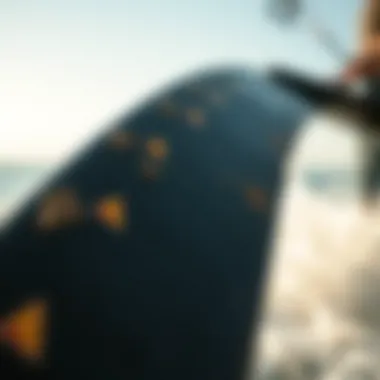

"Regular maintenance might seem like a chore, but it is a small price to pay for extending the life of these marvels of engineering."
In regard to used hydrofoils, adhering to these maintenance suggestions will undoubtedly stack the odds in your favor for exhilarating, worry-free rides. Remember, a well-maintained hydrofoil transforms not just your riding experience but the value it offers over its lifetime.
Performance Expectations
When exploring the dynamic world of kiteboarding, performance is front and center. Especially when it comes to hydrofoils, understanding what to expect can mean the difference between exhilaration and frustration. It’s not just about gliding over water; it's about how a board interacts with its rider, the conditions, and even the equipment's state. Performance expectations set the tone for what riders aim to achieve, guiding them on how to enhance their experience, whether they are seasoned pros or just dipping their toes into the sport.
Comparing New and Used Hydrofoils
This section digs into a critical comparison—the differences and similarities between new and used hydrofoils. First and foremost, new hydrofoils come with the latest technology, potentially offering improved aerodynamics and materials designed for better performance. They are perfect for riders focusing on high-speed thrills, aiming to catch every gust of wind. However, these benefits come at a steep price, which can deter beginners or casual riders.
On the other hand, used hydrofoils can provide a sweet spot for many. You’ll often find well-maintained models that are just a season or two old but still deliver reliable performance. The key here is to assess their condition thoroughly. A second-hand hydrofoil might lack the latest design specifics, but many riders find that they get just as much satisfaction and control from slightly older models.
Additionally, some riders prefer the feel of certain older hydrofoils that may no longer be made but still allow them to create memorable experiences on the water. It’s advisable to create a checklist when comparing:
- Durability: Is the hydrofoil showing signs of wear?
- Material: Are the materials still strong and effective?
- Brand reputation: How did previous models perform?
- User reviews: What have other riders experienced with the model in question?
Asking these questions can help you navigate the used market without steering too far off course. A used hydrofoil can be like a diamond in the rough, delivering great performance at a lesser cost.
Tailoring to Rider Experience
Every rider is unique, and tailoring performance expectations to individual experience is crucial. New kiteboarders often feel overwhelmed by the wealth of options available. For them, a reliable used hydrofoil that caters to beginners can significantly impact their learning curve. A model that offers stability and predictability allows newcomers to build confidence in their abilities, without the hefty price tag of newer innovations.
Conversely, for the seasoned rider, performance is all about precision and responsiveness. Experienced kiteboarders might choose a used hydrofoil that delivers sharper turns or allows for higher speeds, matching their refined skills. Recognizing one's own style and preferences can drastically enhance how a rider connects with their hydrofoil.
It’s also essential to consider local conditions. A hydrofoil that performs well in choppy waters might not be the best option for flat water sessions. Tailoring performance to fit the environment and personal riding style can be a game-changer for maximizing enjoyment.
In sum, understanding performance expectations when considering used hydrofoils encourages riders to immerse themselves fully in creativity and joy that kiteboarding promises. The right hydrofoil—whether new or used—can elevate a rider's experience to heights previously unimagined.
Market Trends for Hydrofoils
Market trends reveal much about the shifting attitudes in the kiteboarding community, especially regarding used hydrofoils. As kiteboarders become more conscious of environmental impact and cost, the second-hand market is thriving. An increase in demand for these products isn't just about saving a few bucks; it's about making more sustainable choices while ensuring that riders can still enjoy high-performance gear.
Rise of the Used Gear Market
In recent years, the used gear market has experienced a notable uptick, and hydrofoils are no exception. Instead of splurging on brand-new models, many enthusiasts are opting for second-hand options. There are several factors driving this surge:
- Affordability: With new hydrofoils sometimes costing an arm and a leg, riders often choose used gear that won't break the bank.
- Performance Parity: Many past models still meet the performance standards of newer designs, making them great alternatives for both novice and advanced riders.
- Community Engagement: The kiteboarding community thrives on sharing skills and knowledge. Buying used gear allows riders to engage, learn, and connect better with others who appreciate the craft.
Additionally, marketplaces such as Kiteforum and Craigslist have become hubs for buying and selling used hydrofoils. Facebook groups dedicated to kiteboarding serve as vibrant platforms where enthusiasts swap advice and equipment. Enthusiasts often share testimonials about their experiences with used hydrofoils, building a culture centered around resourcefulness and camaraderie.
Insights into Future Developments
As we look ahead, it becomes increasingly clear that the trend towards used hydrofoils isn't just a passing phase. Two key aspects will shape future developments in this sector:
- Innovative Recycling Programs: Some brands are beginning to launch initiatives to recycle and refurbish older gear, focusing on environmental impact. This not only extends the life of hydrofoils but enhances value for buyers.
- Diverse Offerings: Manufacturers might respond to the demand for used items by producing mid-range models that blend both affordability and quality. This could lead to models being designed specifically for the second-hand market.
"Buying used gear isn't just a smart financial move; it's a step towards responsible riding."
For further insights, check resources such as Reddit and Wikipedia to engage with the kiteboarding community and stay updated on trends.
Safety Considerations
In kiteboarding, ensuring safety is paramount, especially when navigating the nuances of used hydrofoils. This segment sheds light on crucial safety elements that every kiteboarder should be aware of, particularly when utilizing second-hand gear. The underlying principle remains clear: a well-informed rider is a safer rider.
Assessing Structural Integrity
When scouting for used hydrofoils, the first step is to assess their structural integrity. It's akin to inspecting a classic car; just as you wouldn't drive off in a vintage vehicle without a thorough check, the same diligence applies here. Inspection should start with a thorough visual examination of the foil for any visible damage. Look for:


- Cracks or Dents: Small cracks may seem harmless initially, but they can lead to significant issues during use. Pay attention to the areas that bear the most stress during riding, such as the struts and wing connections.
- Rust or Corrosion: Metal parts, especially those exposed to saltwater, can corrode over time. A little surface rust might be manageable, but extensive corrosion can compromise the foil's integrity.
- Flexibility: Hydrofoils should maintain rigidity. Gently flexing the wing and observing any unnecessary movement can help identify structural weaknesses. If the material bends too easily, it's likely a sign of fatigue.
Evaluating these aspects not only ensures a safer ride but can also enhance overall performance. As they say in the sailing community, "A stitch in time saves nine." Taking the time to inspect properly can save a lot of trouble later on.
Best Practices for Safe Riding
Once you’ve secured a used hydrofoil that passes the integrity checks, riding safely demands continuous attention. Here are some best practices that keep kiteboarders flying high and low on risks:
- Always Wear Protective Gear: Helmets, impact vests, and wetsuits can offer crucial protection against falls and collisions. Your head and body are your most valuable assets.
- Know Your Limits: It’s easy to get carried away in the thrill of kiteboarding. Stick to your skill level, especially when you're experimenting with a used hydrofoil that you're not yet accustomed to.
- Check Compatibility: Ensure that your hydrofoil’s size and configuration align with your kite and board setup. Mismatched gear can lead to unpredictable handling and can put a rider at risk.
- Practice in Controlled Environments: Start riding in calm waters before heading into choppy conditions. This allows for gradual acclimatization and reduces the risk of accidents.
- Regularly Review Equipment: Just as one checks their oil in a car, make it a practice to inspect your gear before every ride. This catches any potential issues right out of the gate.
"Safety isn't expensive, it's priceless."
In embracing these precautions, kiteboarders not only promote their safety but that of those around them as well. It’s the kind of respect for one’s self and fellow enthusiasts that nurtures the community and uplifts the sport.
Through a meticulous approach to assessing used gear and adhering to best practices, kiteboarders can enjoy the exhilarating experience of riding on hydrofoils while minimizing risks. The thrill of gliding above water shouldn’t come at the expense of safety.
Community Insights
In the realm of kiteboarding, community plays a pivotal role. The shared knowledge and insights among enthusiasts create an invaluable resource for both new and seasoned kiteboarders. The experience of other riders with used hydrofoils can significantly influence purchasing decisions, leading to better choices and a more satisfying experience on the water. This collaborative spirit not only fosters a sense of belonging but also aids in the sustainability of the sport by encouraging the exchange of second-hand equipment.
Expert Opinions
Expert opinions are often the bedrock on which kiteboarding enthusiasts build their understanding of used hydrofoils. These insights come from individuals with deep industry knowledge - whether it's seasoned instructors, professional riders, or manufacturers themselves. Engaging with experts can lead to several benefits:
- Technical Knowledge: Gaining insights into the design aspects of hydrofoils can empower riders to choose equipment tailored to their specific needs.
- Market Trends: Understanding shifts and trends in the hydrofoil market from professionals illuminates what makes a hydrofoil a worthwhile investment.
- Safety Tips: Experts often provide guidance on safety practices specific to used gear, enhancing the overall riding experience by minimizing risks.
"Experiencing success on a used hydrofoil starts with understanding its unique characteristics that only a veteran can elucidate."
Connecting with experts can be done through various channels such as industry forums, social media groups, or local kiteboarding clubs. Websites like reddit.com and facebook.com are excellent platforms for checking in with fellow kiteboarders and industry professionals.
Rider Experiences with Used Gear
The anecdotes of fellow riders carry weight in the decision-making process. Actual experiences with used hydrofoils provide real-world information that goes beyond specifications and sales pitches. Some common themes that often arise from rider discussions include:
- Real Performance Insights: Riders frequently share stories about how a particular model performed in varied conditions, helping potential buyers gauge something like drift or lift.
- Maintenance Stories: These tales often highlight unforeseen issues that arose during use, giving insight into common wear and tear that new buyers should look for.
- Value for Money: Many riders discuss whether they felt the price they paid for their used hydrofoil was justified by their subsequent experiences in the water.
Engaging in conversations can happen at kiteboarding meetups or in online groups, where like-minded enthusiasts gather around shared passions. These interactions foster deeper understanding and often lead to recommendations on where to buy used gear or specific brands to consider or avoid.
Resources for Kiteboarding Enthusiasts
In the fast-paced world of kiteboarding, having the right resources at your fingertips can make a world of difference. Accessing accurate information and connections within the community provides more than just data; it builds confidence for both new and seasoned riders. As kiteboarding enthusiasts approach the challenge of selecting used hydrofoils, the right resources can offer insights that enhance their experience. These resources are not simply useful; they can significantly improve your skills, help you understand equipment better, and connect you with fellow enthusiasts.
Online Marketplaces for Used Hydrofoils
Navigating the online marketplace for second-hand hydrofoils can be both thrilling and daunting. Platforms like eBay, Craigslist, and specialized websites such as KiteLine, KiteTrader, and WindGURU serve as vital resources. Each of these sites allows kiteboarders to browse a wide variety of hydrofoil types, styles, and price points. Understanding how to sift through listings is crucial. Here are some tips:
- Read the Descriptions Carefully: Not all sellers provide detailed information. Pay close attention to specifics such as the model, condition, and any modifications that might have been made.
- Check Seller Ratings: Evaluate the credibility of sellers using feedback and ratings. A high rating often indicates reliability and transparency.
- Photos Are Key: Request additional photos if necessary. A picture is worth a thousand words and can reveal subtle wear that might not be mentioned in the listing.
- Price Comparisons: Research the typical pricing for the model you're considering to identify fair deals. Avoid impulsive purchases; patience can yield better deals.
In addition to these marketplaces, Facebook Marketplace and Instagram often showcase local sellers, allowing you to inspect items in person. Connecting with these sellers can lead to insightful conversations about the listings and the seller's personal experiences with the gear.
Forums and Community Groups
Kiteboarding forums and community groups are invaluable resources for gaining knowledge and support. Platforms such as Reddit (specifically subreddits like r/kiteboarding) and dedicated forums on websites like KiteForum serve as treasure troves of information. Here’s why these communities are essential:
- Shared Experiences: Reading both positive and negative experiences helps in making informed decisions. Members often share their personal journeys with specific gear, providing real-world insights that you won’t find in product descriptions.
- Advice and Recommendations: Whether you need help troubleshooting an issue with a used hydrofoil or advice on brands to consider, these groups are filled with knowledgeable individuals willing to lend their expertise.
- Upcoming Events: Staying plugged into community announcements can inform you about local events, competitions, and meet-ups, allowing you to engage with fellow kiteboarders and learn from one another.
- Tips for Purchase and Maintenance: Forums offer guidelines and tips specifically tailored for second-hand equipment, arming you with crucial knowledge before making a purchase.
In sum, engaging with online forums and marketplaces fosters a sense of community that enhances your kiteboarding journey. Connecting with like-minded individuals and sharing knowledge can elevate your experience, making every ride more thrilling than the last.
"The best way to find out what works for you is to learn from the experiences of others, so don't hesitate to dive into these resources."
For further exploration, consider visiting:
- Wikipedia on Kiteboarding
- Britannica - Kiteboarding Overview
- Reddit’s Kiteboarding Community
- Facebook Marketplace
- KiteForum
By integrating these resources into your kiteboarding pursuits, you enhance not just your knowledge but also your connection to this vibrant sport.







